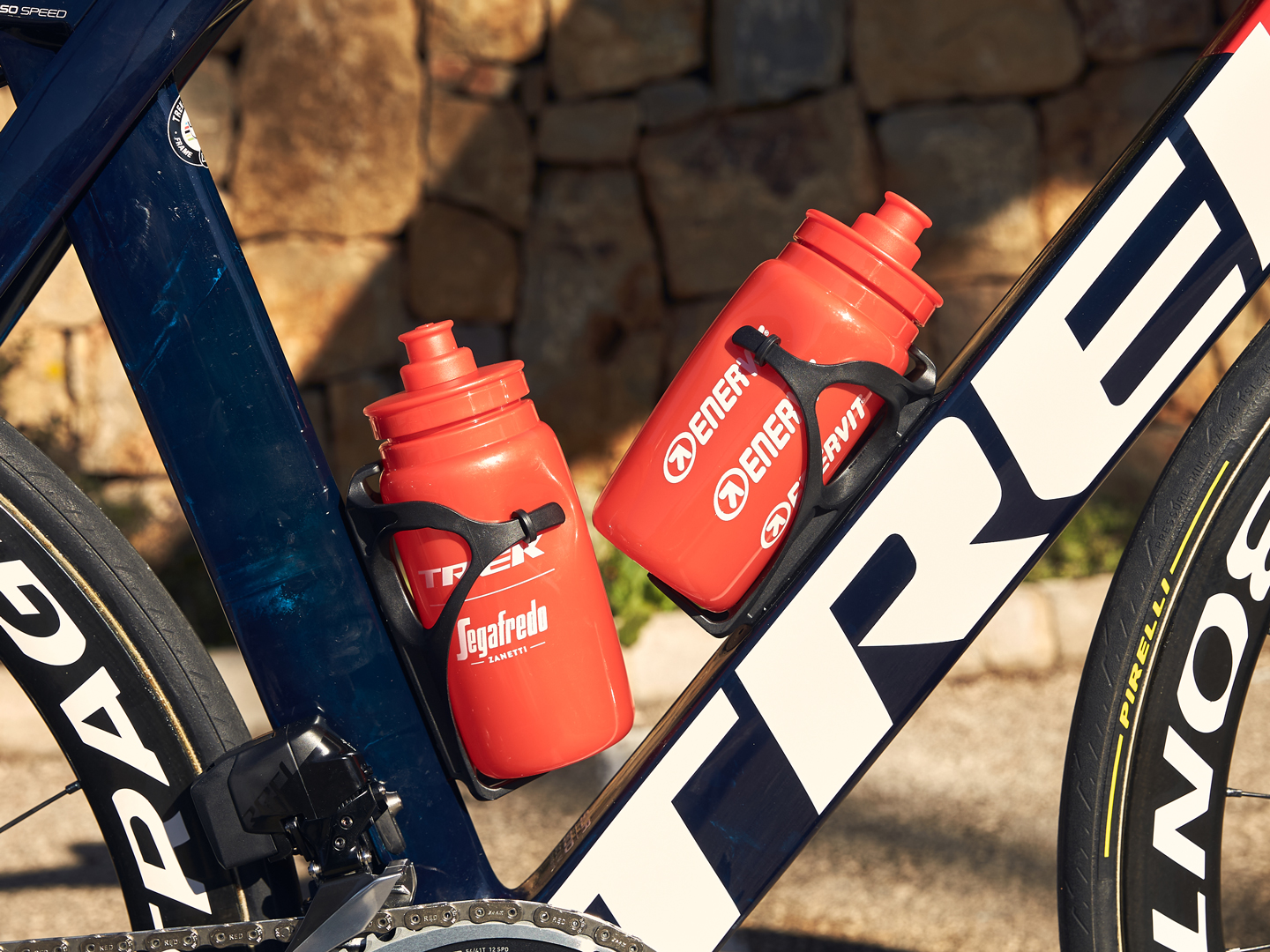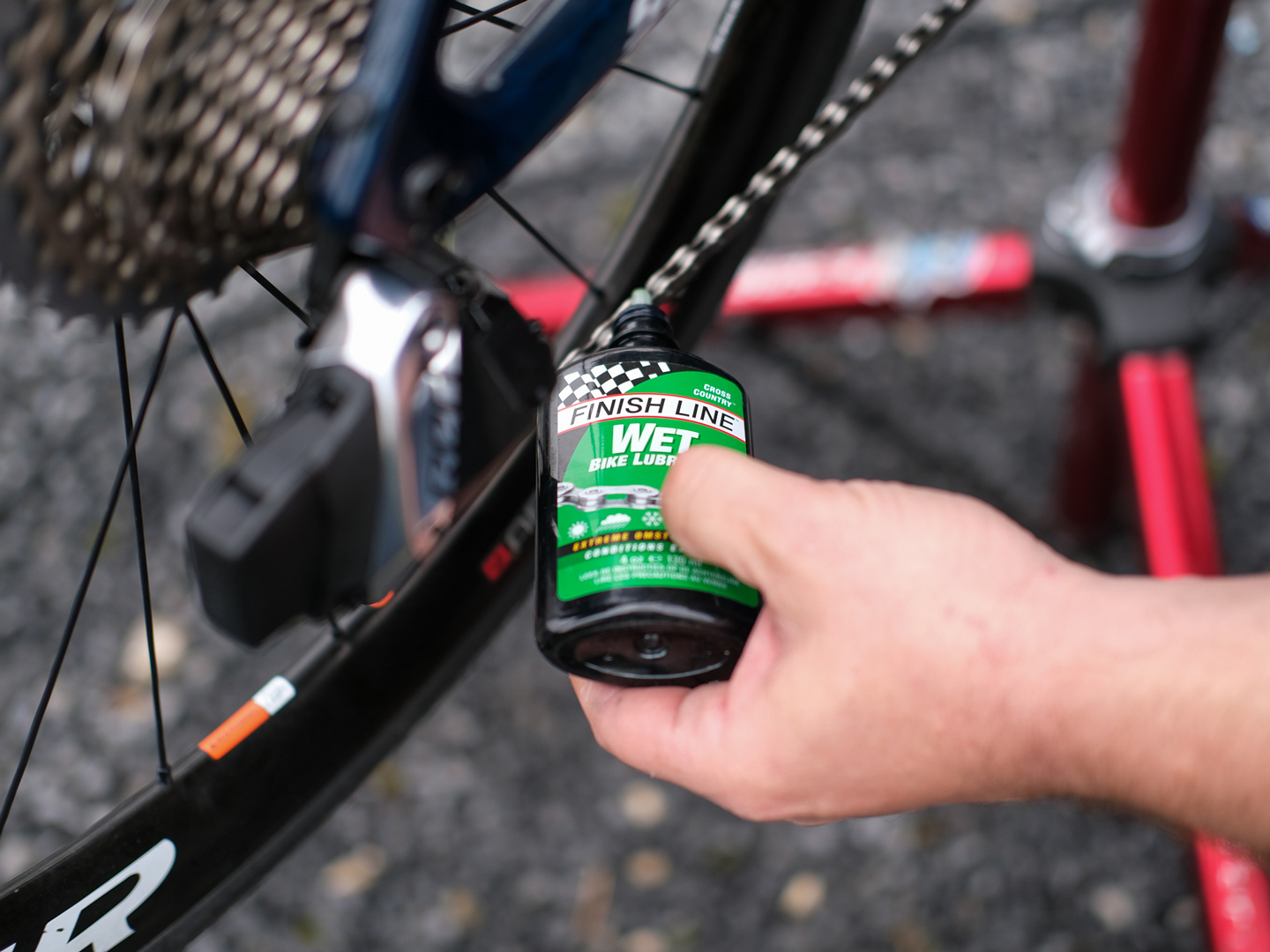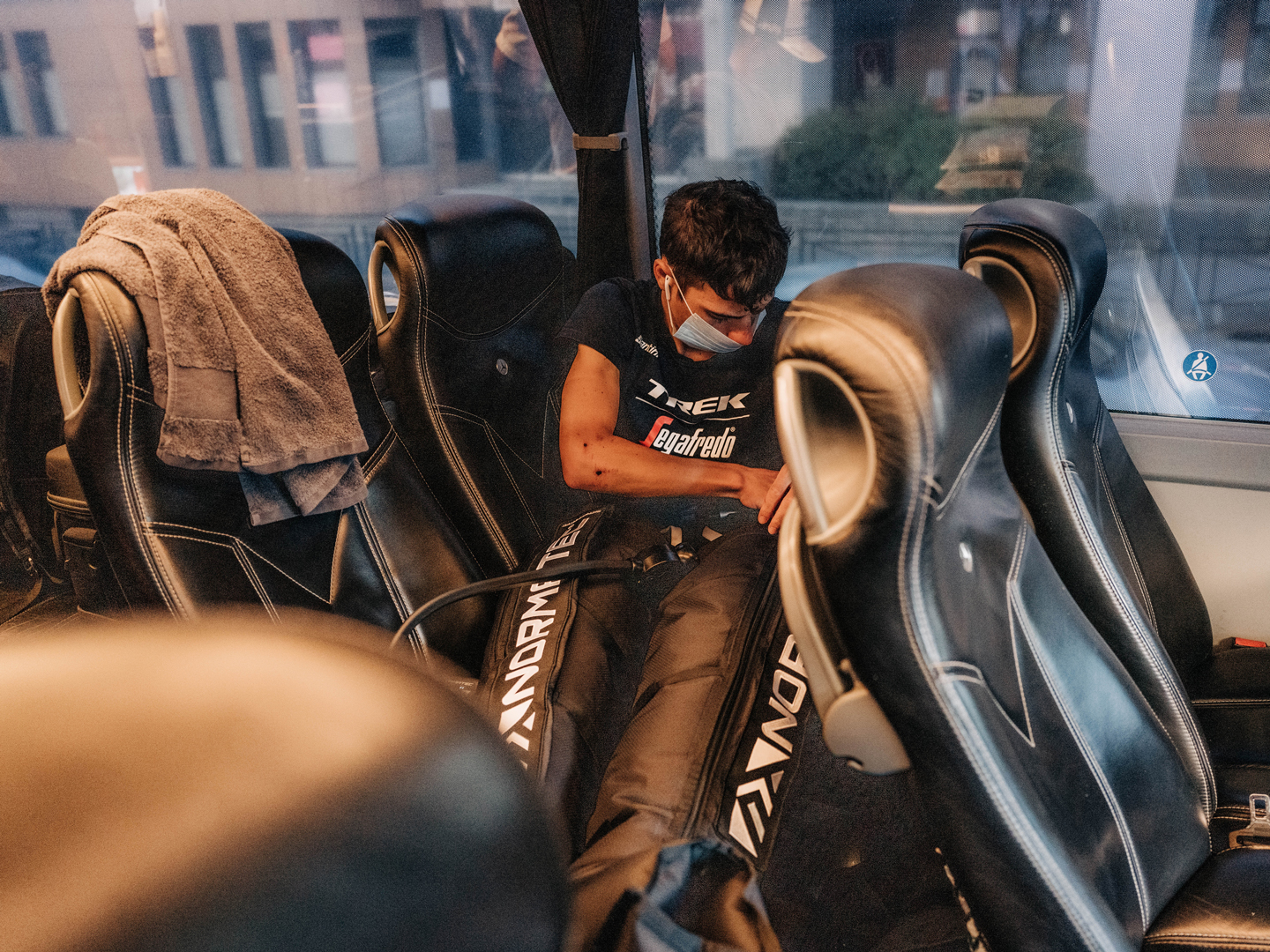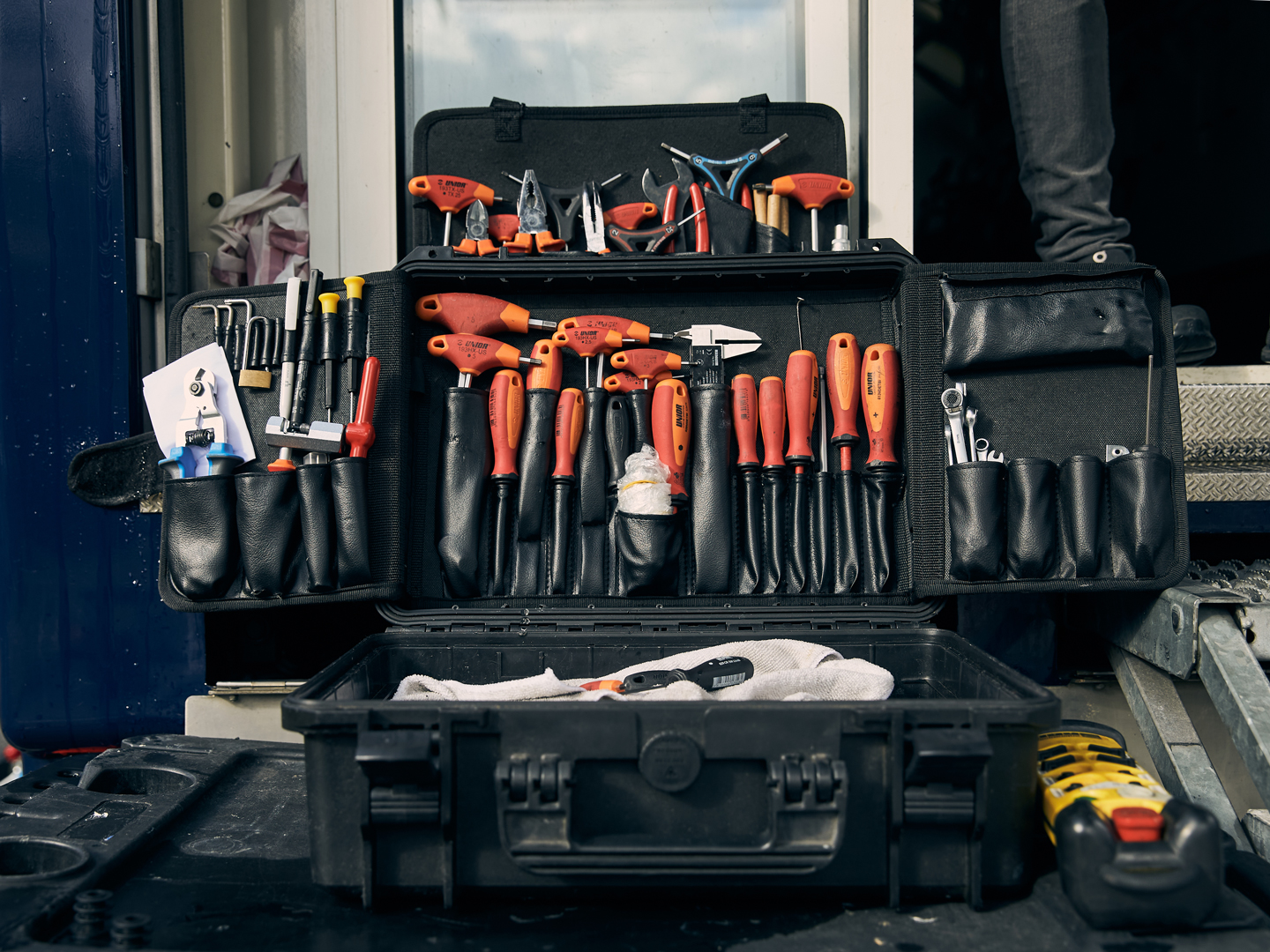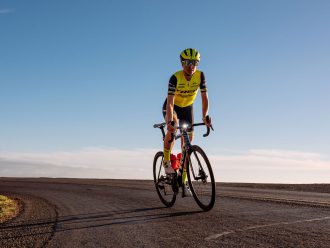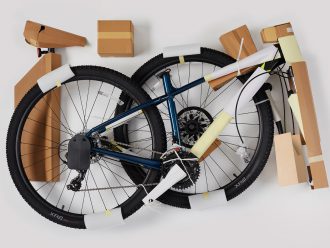Preparing a WorldTour team for the Tour de France is a massive undertaking, so much more than rounding up eight riders and eight bikes and getting them to a starting line. The bikes are complex feats of engineering that require fine tuning and constant maintenance. Riders’ bodies are perhaps even more complicated, each needing individually-tailored nutrition and recovery. Supplying a team for three-plus weeks in France takes coordination across dozens of people working all over the world.
Performing well at the Tour de France is a matter of maintenance as much as performance. Not only do riders have to be fast, they also have to manage their down time well, tailoring their nutrition and recovery regimens so that they can race efficiently day after day after day.
Their bikes need almost just as much love and care. Trek-Segafredo’s mechanics work tirelessly to make sure the team’s fleet is in tip-top condition, so that the risk of mechanical issues during crucial moments of the race is near zero.
The team churns through a lot of products to keep itself running during the Tour.
According to Trek-Segafredo technical director Matt Shriver, making sure that the bikes work properly during three weeks of racing takes more than 7.5 litres of Finish Line EcoTech degreaser, six 120 ml bottles of chain lube, a tin of grease to cover all the wheels and bearings, and at least 10 700 ml tins of disc brake cleaner.
On the nutrition end, the numbers are even more staggering. According to Elvio Barcella, a soigneur for Trek-Segafredo, the team will consume the following quantities of Enervit products throughout the Tour: 800 energy gels, 400 energy bars, 30 kilograms of drink mix during the race and 2 kilograms of recovery drink.
The sheer amount of products – stuffed into the team bus, cars, vans and lorries – takes almost constant communication between partners and the team to arrive on time at each stage of the Tour. As with frames and components that go on the bike, Trek-Segafredo will place orders at the end of the prior season for what it thinks it’ll need to make it through the full upcoming racing calendar, including the Tour. The long-standing relationships that the team has with many of its partners makes this process relatively stress-free.
Enervit and Trek-Segafredo work particularly closely together, which is no surprise given how personalised nutrition can be. During the November or December before a new season starts, Enervit reps will meet with Trek-Segafredo staff – in particular, team nutritionist Stephanie Scheirlynck – to listen to the team’s feedback and present a range of products. Because Enervit doesn’t outsource production, it is nimble enough to create new products that are specifically tailored for Trek-Segafredo’s goals.
‘We created, in accordance with Stephanie, a specific race drink that we call “Carbo Trek”,’ Filippo Casarotto, Enervit’s Sports and Fitness Brand Manager, says. ‘We always try to meet the team’s requests, because we are a company that produces more than 80 per cent of its products in-house.’
Finish Line has serviced Trek-Segafredo with lubricants, degreasers, cleaners and polishes for more than 10 years. The company has distribution centres all over the globe, including a Belgian distributor called NOW Company that will be on standby to fulfil all distribution requests for the Tour.
‘This comprehensive supply chain has allowed Finish Line to support Trek-Segafredo,’ Alex Barouh, Finish Line’s Director of Global Sales, says. ‘We take great pride in delivering our vital maintenance products into the hands of team mechanics within a couple of days of each request.’
The Covid-19 pandemic has created logistical headaches for many of Trek-Segafredo’s partners, causing shipping problems and increasing demand for biking and all products related to it. What used to be a well-worn process suddenly became a lot more complicated.
Saris manufactures the H3 smart trainers that Trek-Segafredo uses at the Tour. The team takes 10 with it across France – eight on the bus for each of the riders, and then two spares in a team lorry. The models that Trek-Segafredo uses are exactly the same as those available to the public. To make them safely at their factory in Madison, Wisc., Saris had to source Personal Protection Equipment and change their plant layout to keep employees socially distanced. At the same time, they had to satisfy tremendous demand for their product.
‘It is a challenge that continues today,’ Brian Turany, Category Manager at Saris, says. ‘We are air shipping more components than we’d like, but that is the only way to catch up with demand. Fortunately, the team does a great job of maintaining and caring for their gear, so we haven’t had to do an “emergency” restock at the service course.
‘Now, more than ever, the Sourcing and Purchasing Department at Saris is the most important group of individuals in the company.’
Sometimes, hiccups are unavoidable. Feedback Sports has reliably provided its partner teams with bike tools and trainers for 15 years, gradually scaling up its support as popularity for its products has increased. For future grand tours, they’re planning to make customised bike stands that celebrate their teams and the atmosphere of the races. But like a lot of companies that make sturdy goods, they’ve struggled during the last year to meet their customers’ needs as swiftly as they’d like.
‘Fortunately, our products are built to last so it’s not a major issue and our teams have been incredibly gracious,’ Thomas McDaniel, Feedback’s Marketing Director, says. ‘But we feel like we owe them the product they requested and it bothers us daily to not be able to satisfy the demand. To prevent this from happening again, in the second week of June we’re placing an order to get products to Europe for next season’s team camps, under the assumption that we’re going to be managing the same shipping struggles.”‘
Hyperice, which makes a range of recovery products, such as massage guns and compression boots, has also grown significantly at a time when shipping and manufacturing has been particularly difficult. Complications like, say, ships getting stuck in canals, cause logistical nightmares on a grand scale, but servicing high-profile customers on a micro level also provides its challenges.
At the Tour de France, each rider has their own Hyperice Hypervolt massage gun, and the team bus has two pairs of Normatec compression boots that the riders share (though some riders request their own). If a device stops working, or if a rider leaves a charger at the previous stage’s hotel, Hyperice will spring into action to deliver replacements as quickly as possible.
‘In France, we would look at who needs what, and we would make sure that we ship it expedited with a guaranteed delivery date by a certain day, probably one or two stages ahead, so that it couldn’t be missed,’ Jessica Miller, Hyperice’s Director of Partnership for Endurance, says. ‘Often, a rider will be using a product on the bus more than they ever have before and they’re like, “I want this”. So then they reach out and we’ll coordinate getting it to them at the next stage so that they have their own personal product to use for the remainder of the Tour.’
Thankfully, a few of Trek-Segafredo’s partnerships are relatively chaos-proof. Unior typically provides the team’s mechanics with new tools during the winter before the season. Under normal circumstances, Unior would visit the team at races directly for feedback about their products. Those personal conversations couldn’t take place during a pandemic-disrupted year, but the team already had everything it needed.
‘Since our tools last a lifetime we really only need to add new tools that are developed with feedback from the team each year,’ Bruce Fina, Marketing and Sales Manager at Unior, says. ‘Fortunately we have had a strong relationship with the team for many years so we are able to handle all the needs through telephone and email conversations.’
Fortunately, some things are timeless.
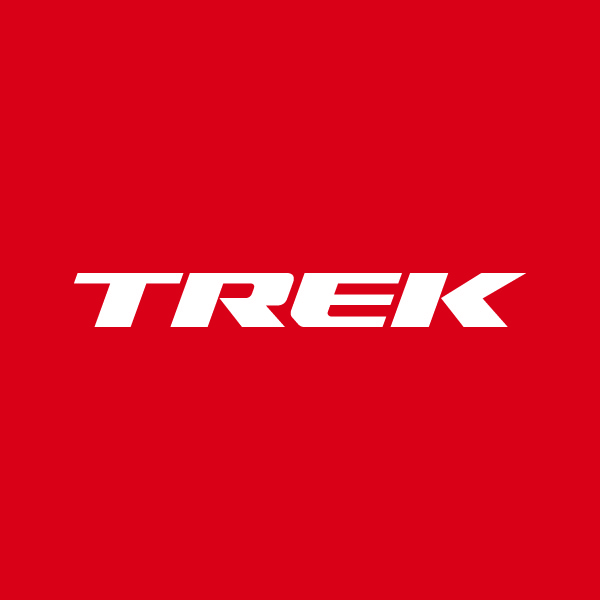
About the Author: Trek
Our mission: we build only products we love, provide incredible hospitality to our customers, and change the world by getting more people on bikes.

